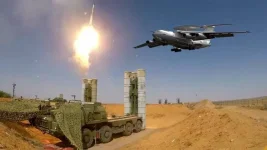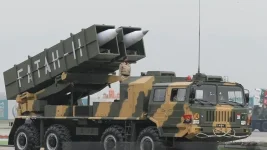- Views: 677
- Replies: 3
Strategic affairs experts are proposing a significant shift in India's approach to counter-terrorism operations that extend into Pakistani territory.
They suggest that the Indian Air Force (IAF) should prioritise neutralising the Pakistan Air Force's (PAF) key operational assets before targeting terrorist training camps and infrastructure.
This approach, they argue, would lead to more effective and decisive outcomes in combating cross-border terrorism.
The IAF, equipped with advanced aircraft such as the Sukhoi Su-30MKI multi-role fighters, Dassault Rafale jets, and the indigenous Tejas light combat aircraft, has historically focused its cross-border responses on militant targets.
This strategy, according to analysts, has allowed the PAF to maintain its air defence capabilities and respond to Indian actions. Experts believe a new strategy that focuses on degrading Pakistan’s air power initially could prevent the PAF from regrouping or challenging India's air operations.
Currently, India's counter-terrorism actions, like the 2019 Balakot airstrike, have showcased the IAF's capacity for deep-penetration precision strikes against terrorist facilities.
However, these missions have often been conducted with a degree of restraint, deliberately avoiding actions that could significantly escalate by sparing Pakistan's military installations.
While this caution aims to limit the risk of wider conflict, it permits the PAF to keep its air defence network active. This network includes long-range radars and airborne early warning and control systems (AWACS) – aircraft equipped with powerful radar and surveillance equipment to monitor airspace and command air operations.
Consequently, Pakistan has demonstrated its ability to launch swift retaliatory actions, as observed when PAF F-16 and JF-17 fighter jets attempted to engage Indian air patrols following the Balakot operation.
This operational restraint, some experts contend, may have unintentionally allowed Pakistan's air force to preserve its combat readiness, potentially providing a shield under which terrorist groups can continue to operate.
By concentrating primarily on terror targets, the IAF could face prolonged engagements because Pakistan’s air defences remain capable of intercepting or complicating subsequent Indian operations.
The PAF's deployment of AWACS platforms, such as the Swedish-origin Saab 2000 Erieye and the Chinese-made ZDK-03, further bolsters its capacity to detect and counter IAF movements, potentially undermining India's operational edge.
A Proposed New Strategy: Prioritising PAF Neutralisation
To more effectively limit Pakistan's alleged support for terrorist activities and assert air dominance, a proactive strategy is being advocated. This approach calls for the IAF to focus on neutralising critical PAF assets before proceeding to strike terror camps.Key elements of this proposed strategy include:
- Targeting Long-Range Radars: Pakistan's air defence relies on various radar systems, many sourced from China and Western countries, to monitor its airspace. Experts suggest that destroying or disabling these radars using stand-off precision weapons, such as the BrahMos supersonic cruise missile or Spice optically guided bombs, would severely impair the PAF's ability to detect IAF aircraft and coordinate an effective response.
- Neutralising AWACS Platforms: Pakistan’s AWACS fleet, though not extensive, provides vital early warning and command-and-control functions. Eliminating these high-value assets, either through air-to-air engagements using long-range missiles like the Meteor (carried by IAF Rafales) or by striking airfields where they are based, would significantly degrade the PAF’s situational awareness.
- Disrupting Vital Military Assets: Beyond radars and AWACS, the proposal includes targeting PAF command centres, communication infrastructure, and airfields that host its primary fighter aircraft, including the JF-17 (a joint China-Pakistan developed fighter) and US-origin F-16s. Such disruption would aim to delay or prevent a cohesive Pakistani response.
- Sanitising Pakistani Airspace: Instead of limited strikes, the IAF would aim to establish temporary air superiority over specific areas within Pakistani airspace. This would involve Suppression of Enemy Air Defences (SEAD) operations, potentially using electronic warfare capabilities of aircraft like the Su-30MKI equipped with jamming pods and anti-radiation missiles designed to target enemy radar systems.
Furthermore, they believe it may be perceived by Pakistan's military establishment as a lack of Indian resolve and fails to adequately address the alleged protective cover the PAF provides to terrorist infrastructure.
In contrast, neutralising key PAF assets first would, according to these experts, decisively shift the operational advantage to India. A weakened PAF would find it difficult to contest IAF operations, allowing India to dismantle terrorist infrastructure with greater effectiveness and reduced interference. This would also convey a stronger message to Pakistan's military leadership regarding India's readiness to escalate if provocations continue.
However, this proposed strategy carries significant risks. Targeting PAF assets could heighten tensions and potentially lead to a broader conflict.
Pakistan's status as a nuclear power and its stated "full-spectrum deterrence" doctrine, which implies a willingness to use nuclear weapons in response to conventional attacks that threaten its existence, add considerable complexity.
Additionally, the PAF is a capable force, continually modernising with assets like Chinese-built JF-17s and J-10CE fighters and advanced munitions.
To manage these risks, it is suggested that the IAF must fully utilise its technological superiority. Advanced platforms like the Rafale, with its sophisticated AESA (Active Electronically Scanned Array) radar and long-range weaponry, alongside air defence systems like the S-400 (a Russian long-range surface-to-air missile system capable of engaging multiple aerial targets), are seen as crucial tools.
Proponents believe that carefully coordinated operations involving electronic warfare, cyber capabilities, and precision strikes could minimise escalation risks while achieving strategic objectives.


